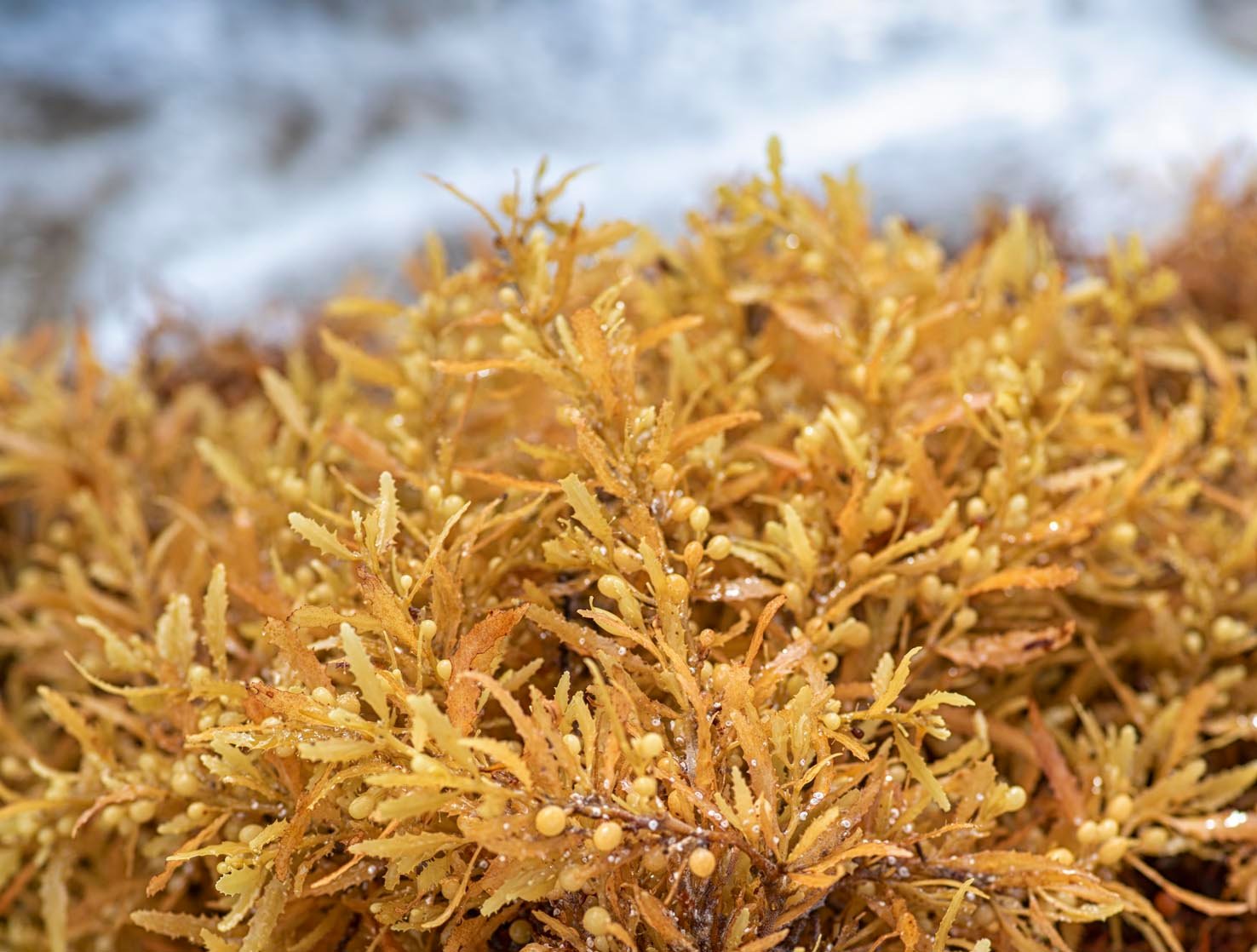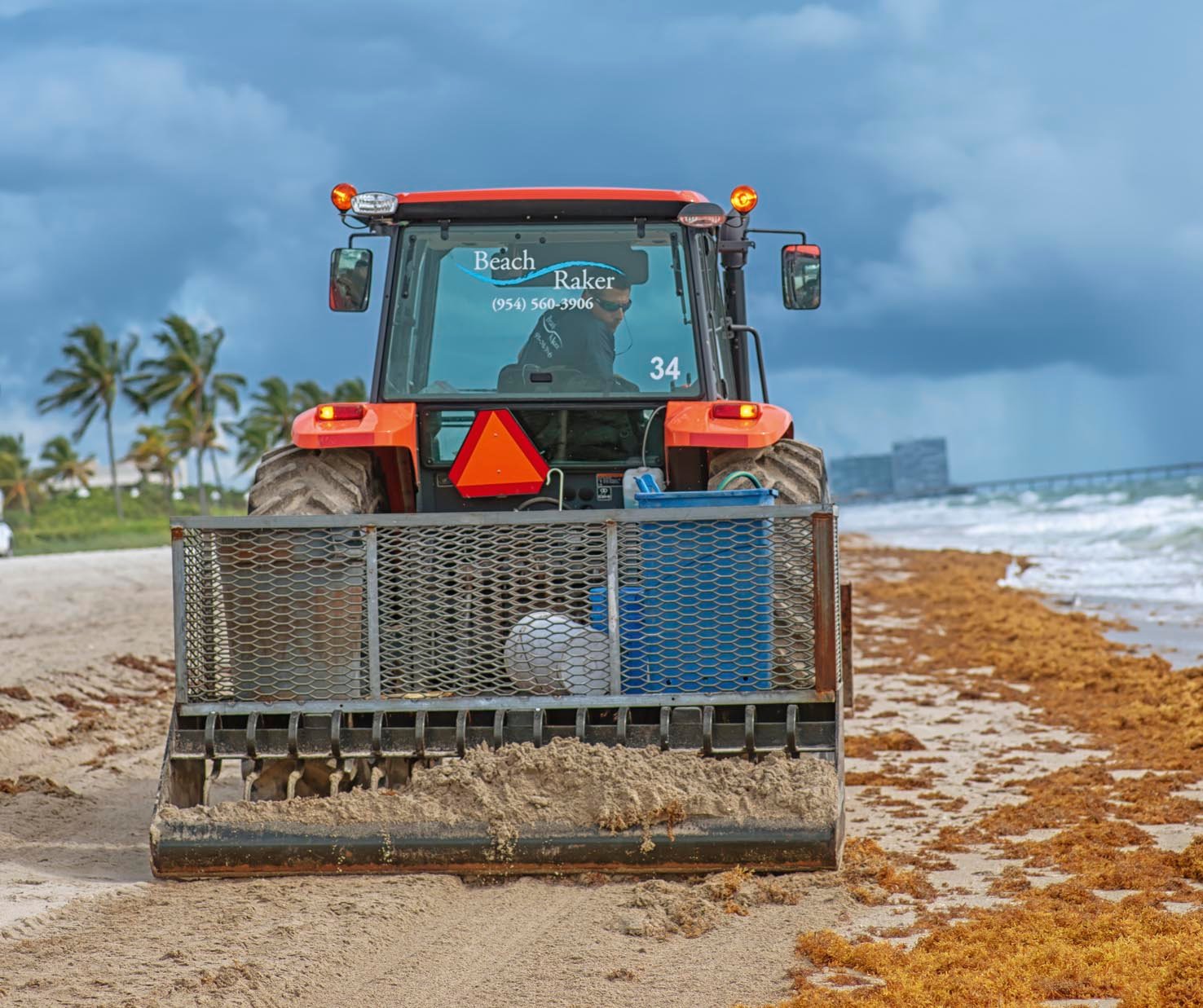
The Sargassum Invasion
Text and photos : Javier A. Pinzón
Since 2011, Caribbean beaches from northern Florida and Mexico to Isla Margarita off the northern coast of Venezuela have been invaded by sargassum, an alga that darkens the beautiful ocean waters and dies on the beach, creating a barrier and producing an awful smell as it decomposes.
According to Chuanmin Hu, a researcher at the University of South Florida and professor of optical oceanography, small amounts of sargassum were observed prior to this in the tropical Atlantic, but, in the early part of this decade, major proliferations began forming a dark spot in the ocean comprised of an estimated 20 million tons of this biomass, which by July 2018 was calculated to cover approximately 3,500 miles.
After studying satellite images collected over a period of 19 years, Chuanmin Hu continues, scientists noticed that millions and millions of sargassum emerged every year in the central Atlantic, far from their place of origin.

What is sargassum?
Sargassum is a genus of brown algae that grows in tropical waters and travels on Atlantic Ocean currents. It was first described by Christopher Columbus when he crossed what he called the Sargasso Sea, between the eastern United States and northeastern Cuba, where the near absence of ocean currents allows algae to agglomerate. The vast majority fix roots to the bottom of the sea, but some species, such as the S. natas and the S. fluitans, have gas-filled bladders that allow them to float freely on the surface.
Algae are part of the ecosystem and their presence is not necessarily harmful: they serve as habitat and food for shrimp, turtles, crabs, and a wide variety of fish. Sargassum also works as a sunscreen for the species with which it cohabits, cooling the water under the enormous masses that accumulate on the surface. However, if they multiply beyond the desired levels, these algae can cause great ecological damage.
What effect does this have on the coasts?
This “brown tide” (as concentrations of this macroalgae are known on the coasts) produces several effects that endanger local ecosystems. Production of hydrogen sulfide increases acidification; light is significantly reduced, which kills or damages corals and reduces seagrass, also leading to the loss of beach areas; sea turtles are affected since it becomes difficult for a newborn turtle to cross the columns of decomposing algae on their way to open waters; and nitrogen and phosphorus concentrations increase, which can lead to eutrophication (increase of nutrients causing an excess of phytoplankton), thereby increasing the growth of other algae and bacteria and killing off all other types of marine life. Aside from these and many other types of damage, the sargassum has had disastrous effects on beaches where it washes up and decomposes, bringing the Caribbean tourist industry to its knees.

The reason for the new proliferations
Using satellite imagery, scientists can see that the sargassum currently invading the region comes, not from the same area where it has traditionally lived, but from another source on the other side of the Atlantic, which began forming about ten years ago. The sargassum drifts on currents between the American coasts south of the Antilles, the mouth of the Amazon River, the coasts of Africa, the southern Canary Islands, and the Gulf of Guinea.
What began happening in 2011 to cause the massive increase in these algae? According to Chuanmin Hu, in order to grow, the algae need the kind of sunlight guaranteed in tropical waters, along with nutrients, especially nitrogen and phosphorus. At either end of the area where these algae are proliferating, two large sources of these nutrients converge: to the east, in the deep waters between the Canary Islands and the southern Cape Verde Islands, and to the west. We see a huge amount of sediment dumped into the sea by the Amazon and other rivers such as the Orinoco, at a rate of more than 7 million cubic feet per second.

To better understand the anomaly, the scientists analyzed the behavior of the Brazilian Amazon and its fertilizer consumption patterns, finding that the increase in sargassum coincides with deforestation campaigns between 2010 and 2018 and the fact that the land began to be used for agriculture, resulting in an increase in fertilizer use, which was 67% higher than in the previous period. Deforestation affects the sea in two ways: through the presence of fertilizers, and by increasing runoff, which drags a cocktail of these nutrients into the sea, altering the chemistry of water and allowing sargassum to flourish disproportionately.
What can be done
about it?
In the short term, sargassum can be put to good use. One example of this is the house built by Omar Vázquez Sánchez, founding entrepreneur of Blue-Green of Puerto Morelos (Mexico), in just two weeks, using sargassum mixed with adobe to produce a new material capable of withstanding strong earthquakes and hurricane winds.
In the medium and long term, proliferation can be further studied to identify sources of nutrients and the amount of agrochemicals that reach the sea. Deforestation can also be significantly reduced.
What happens in the forests also affects marine life.




